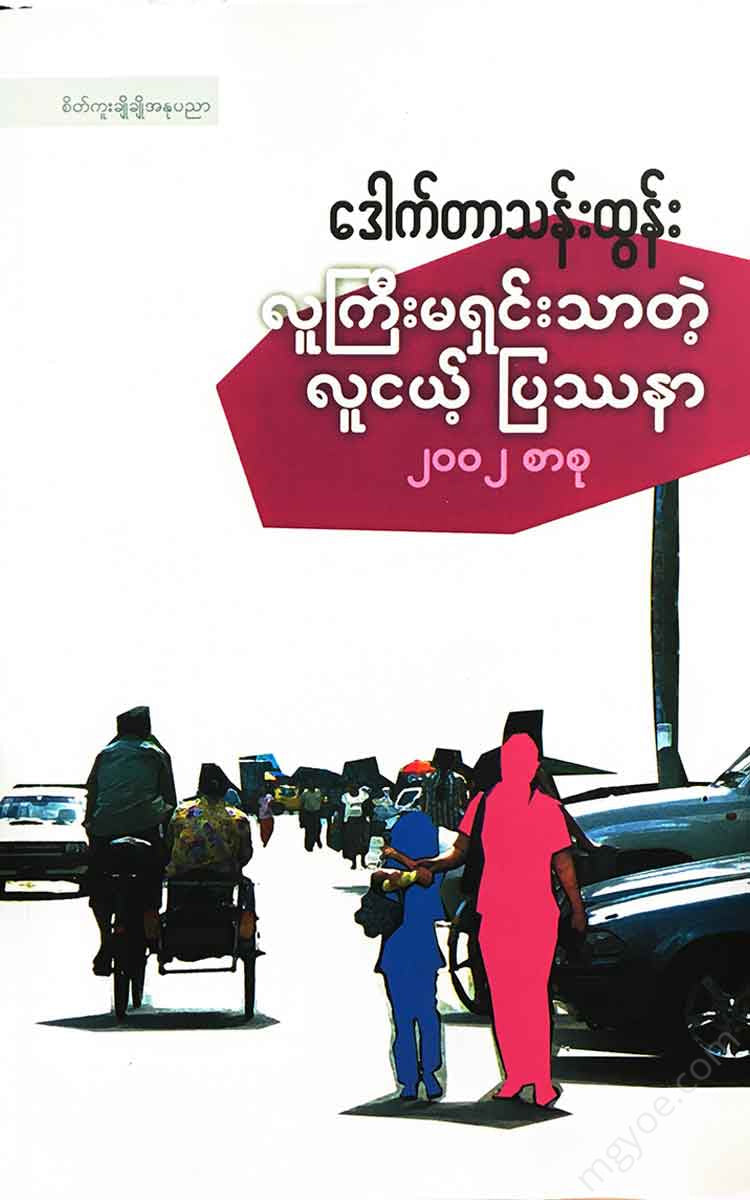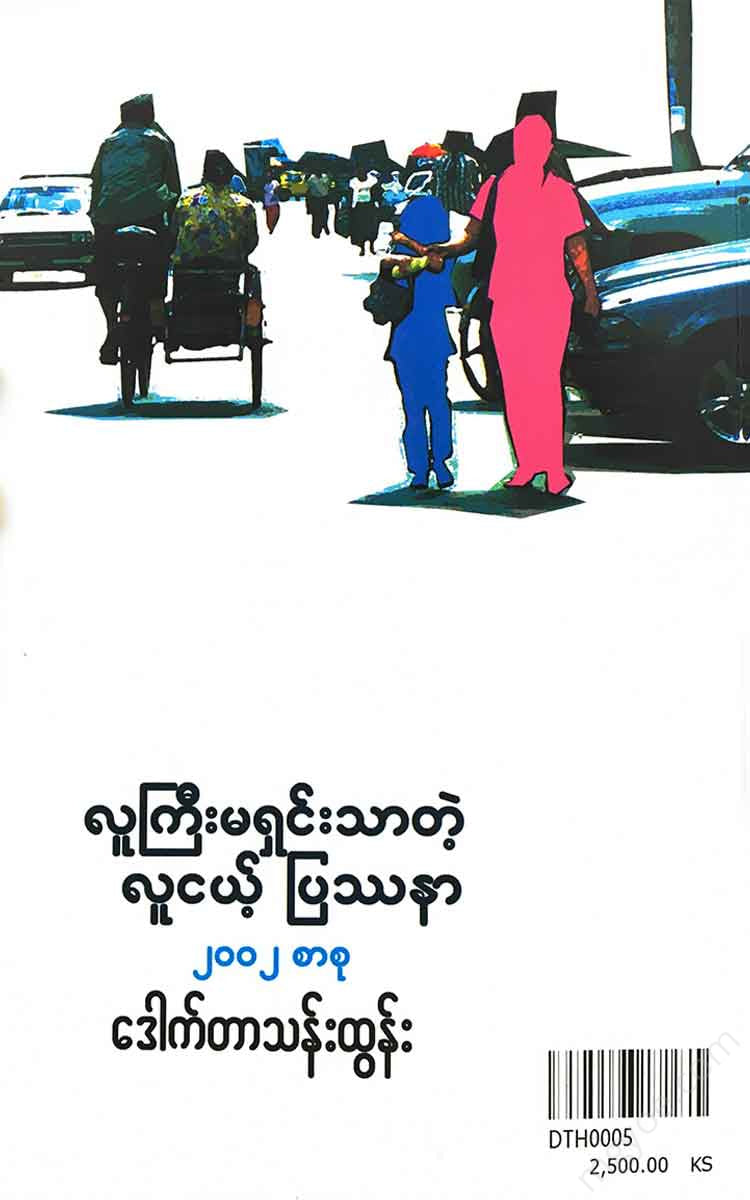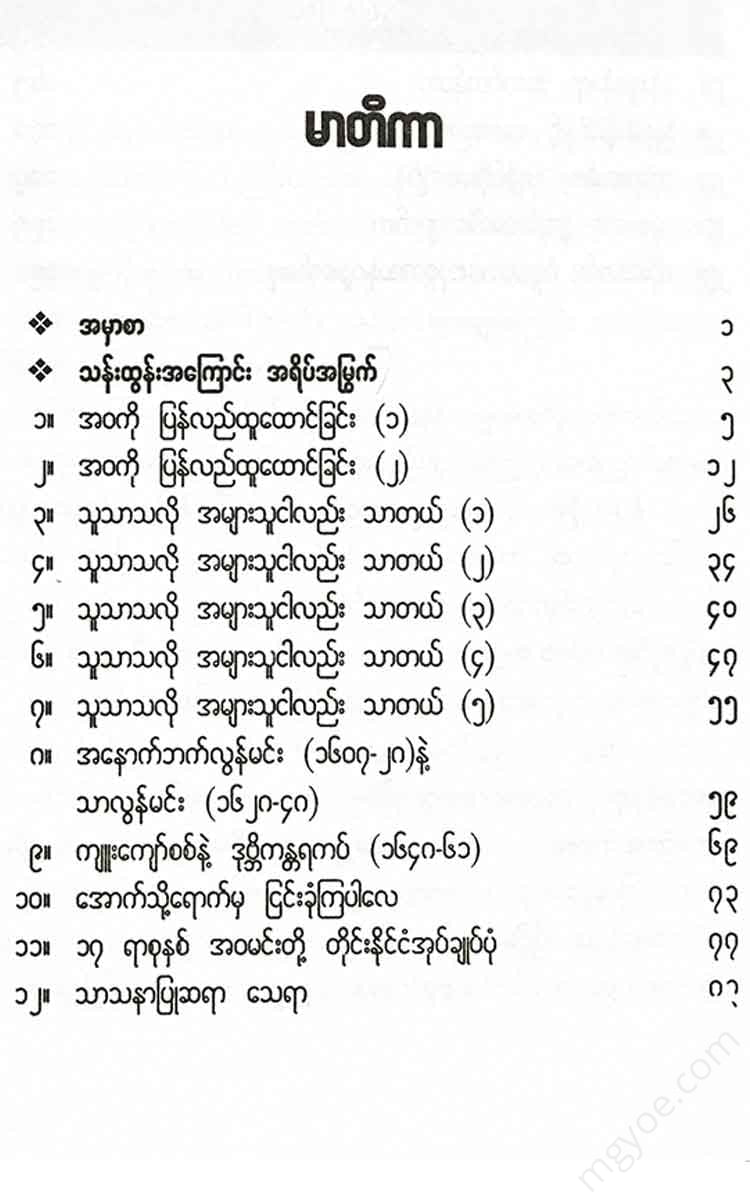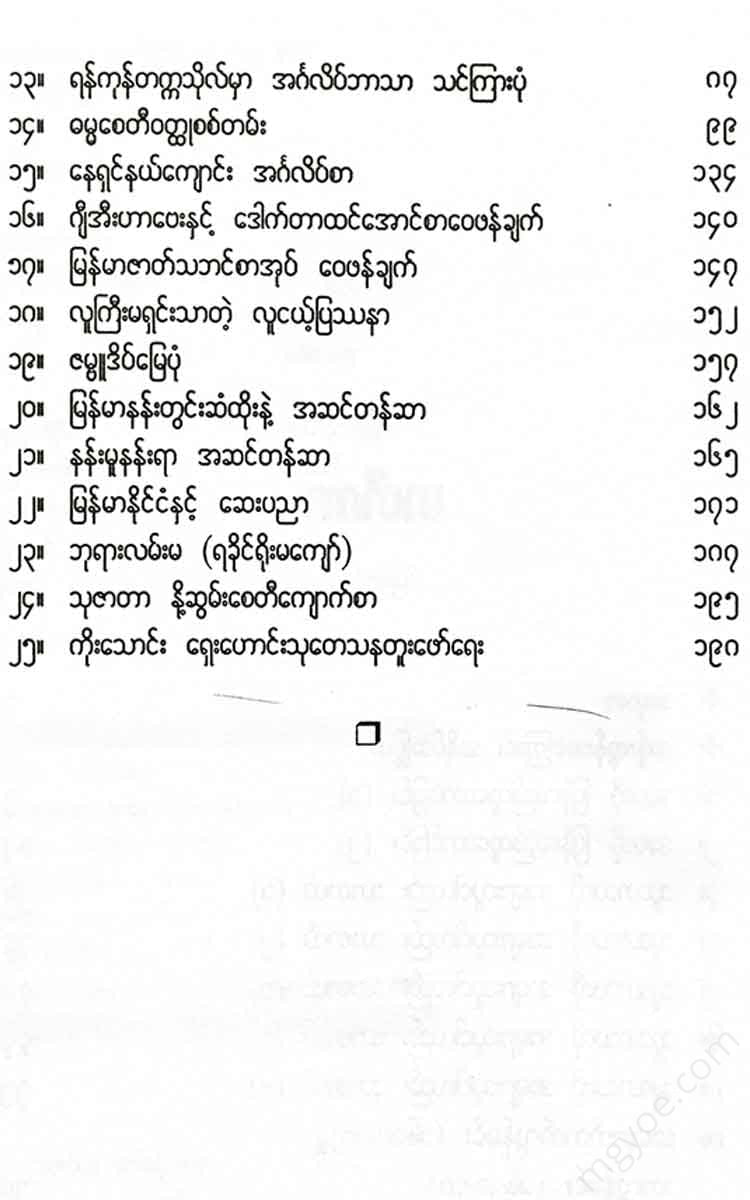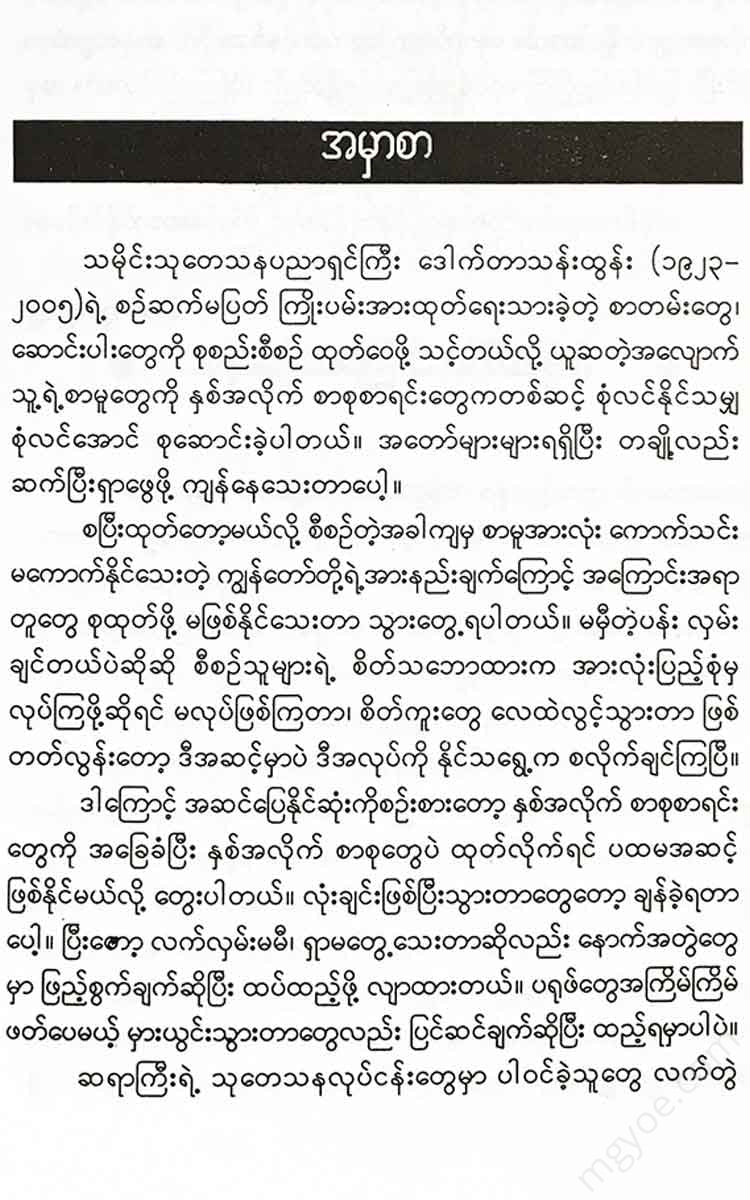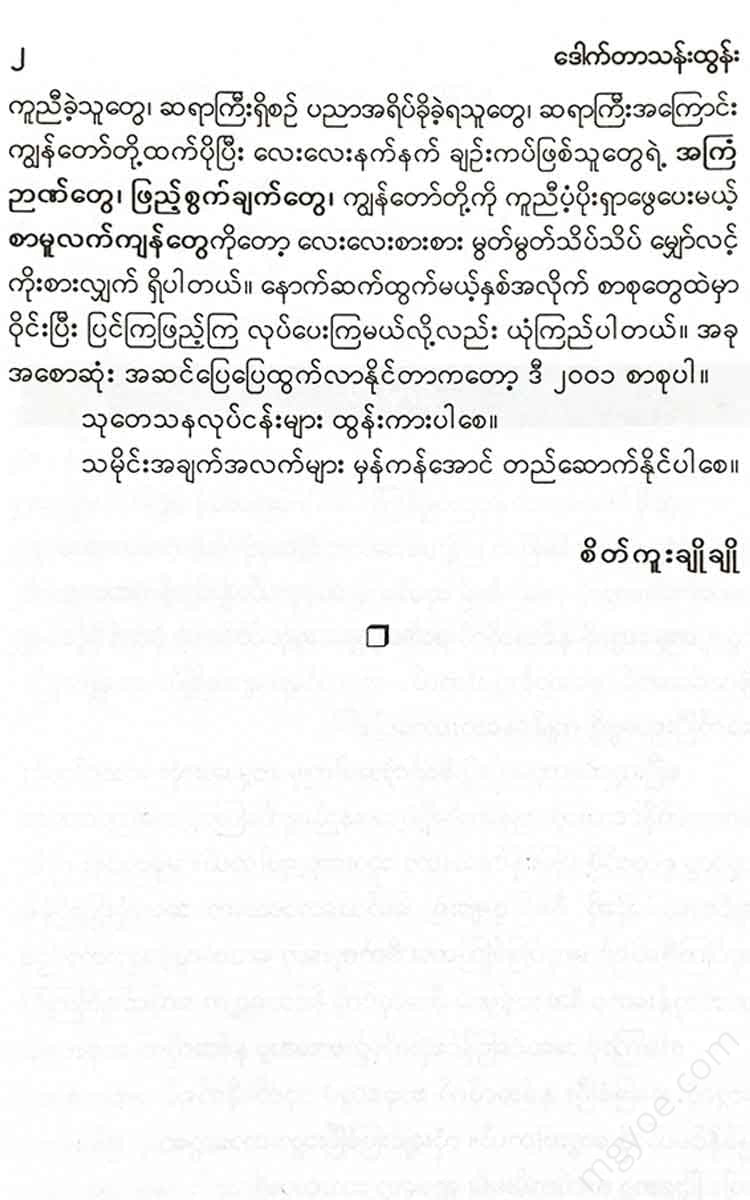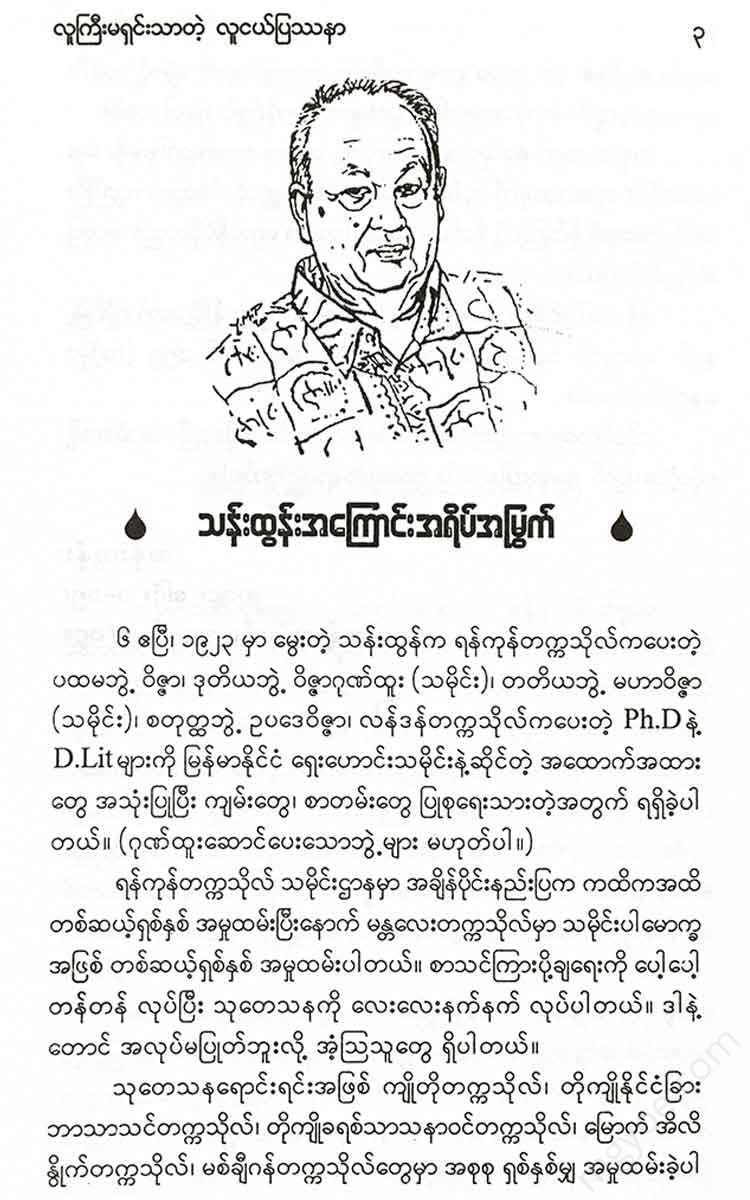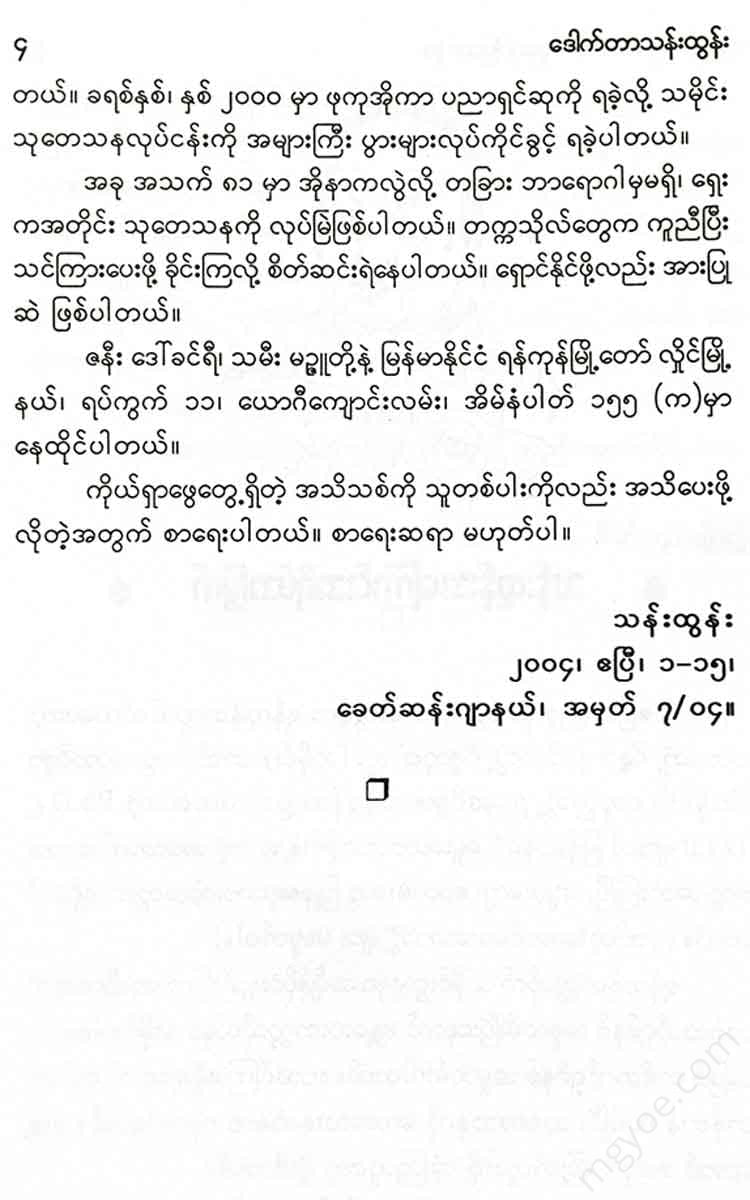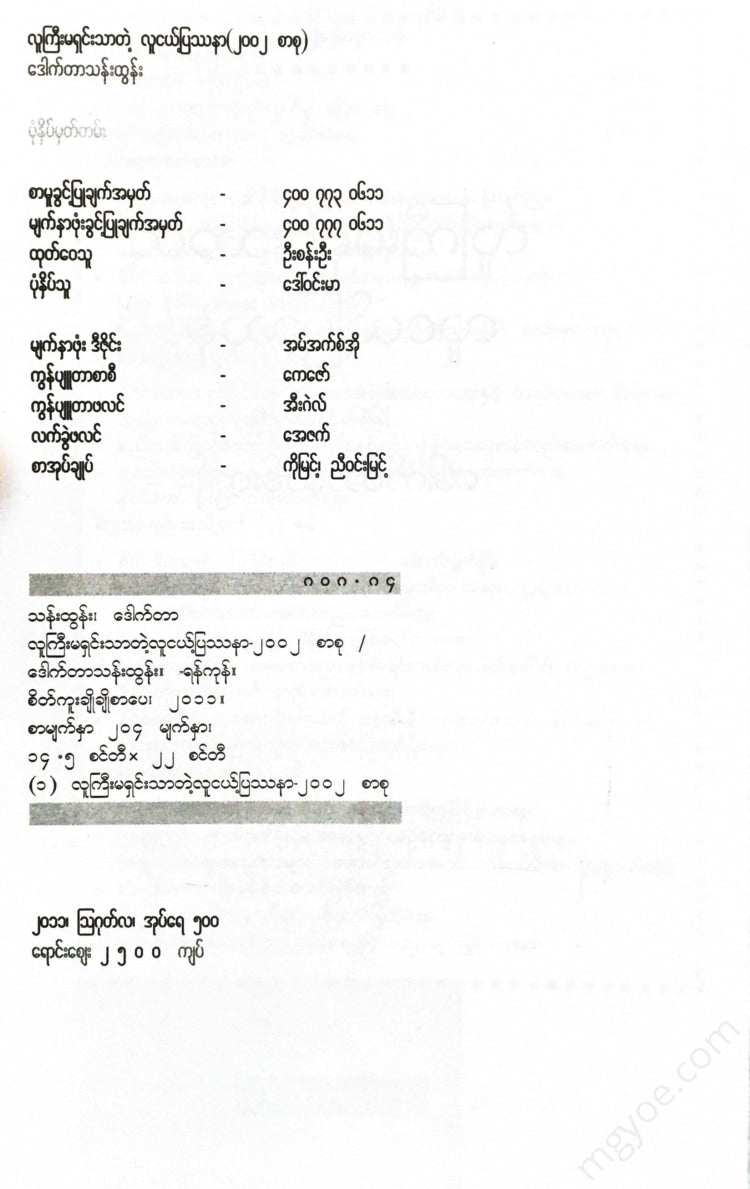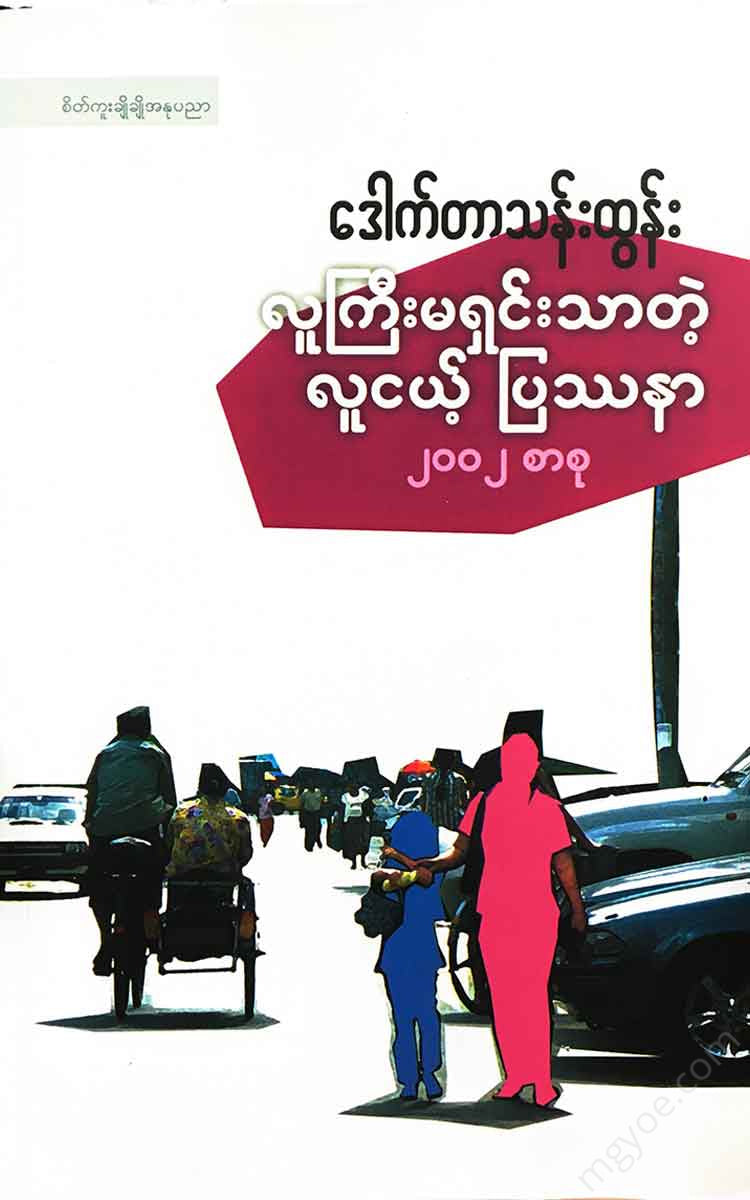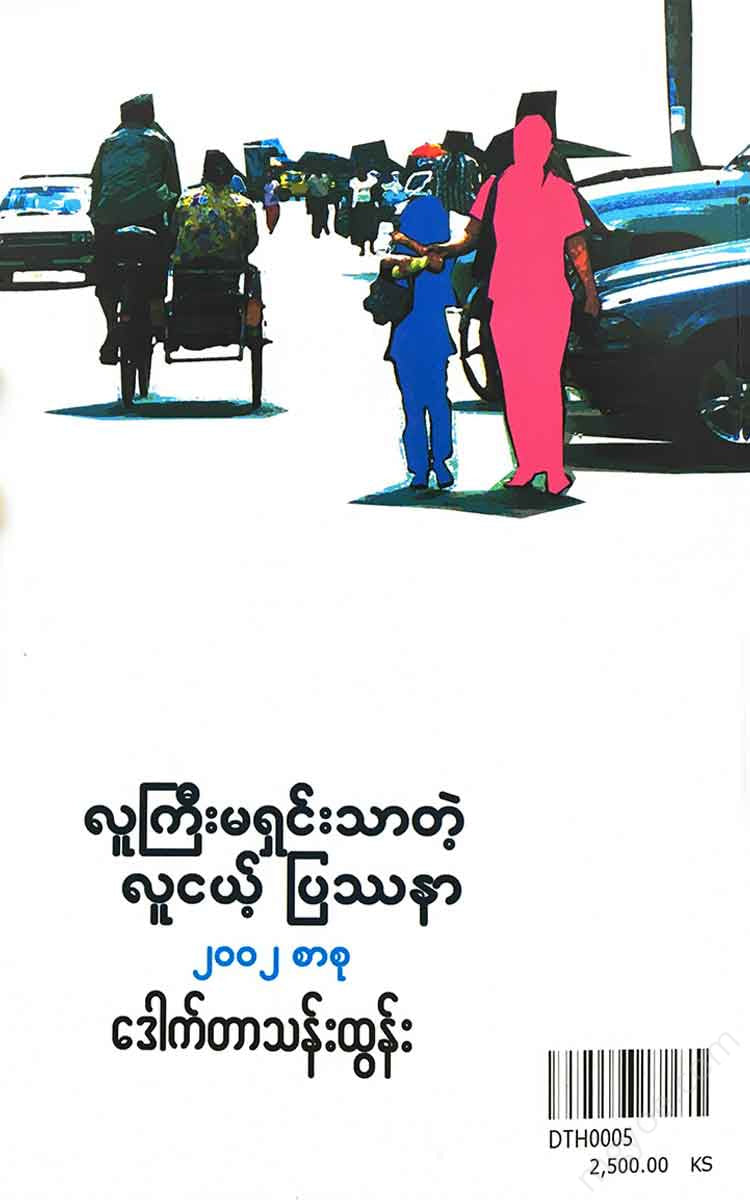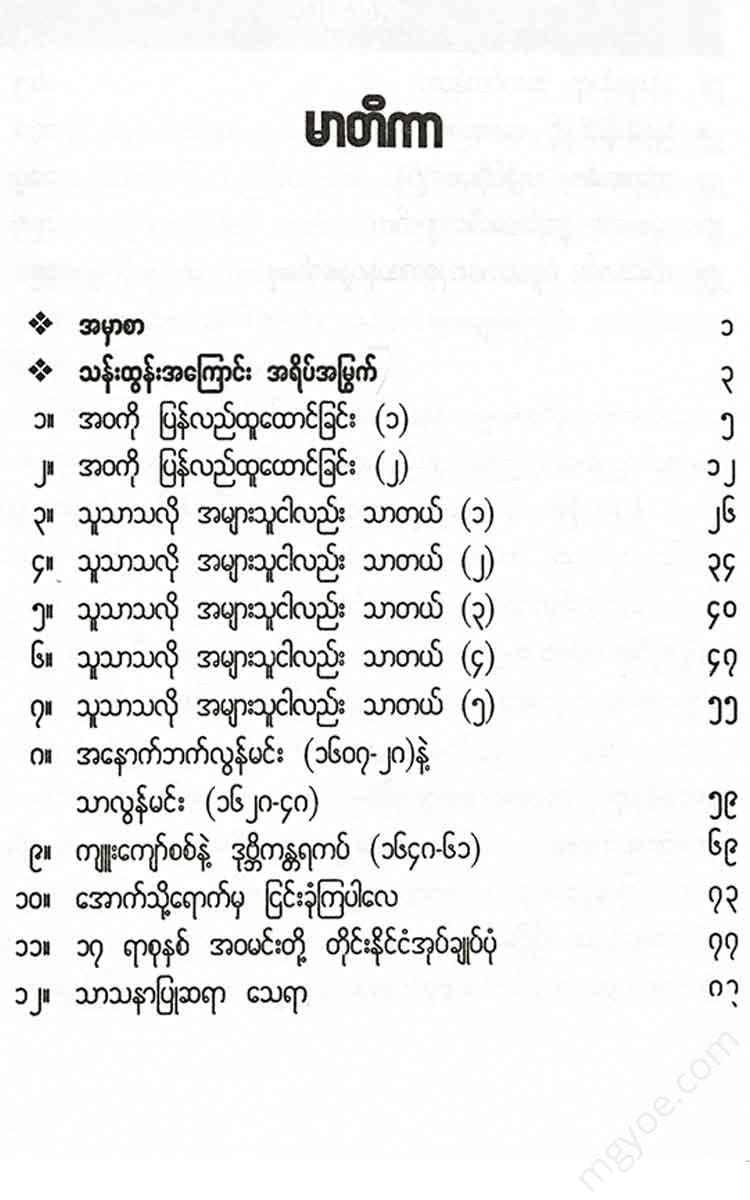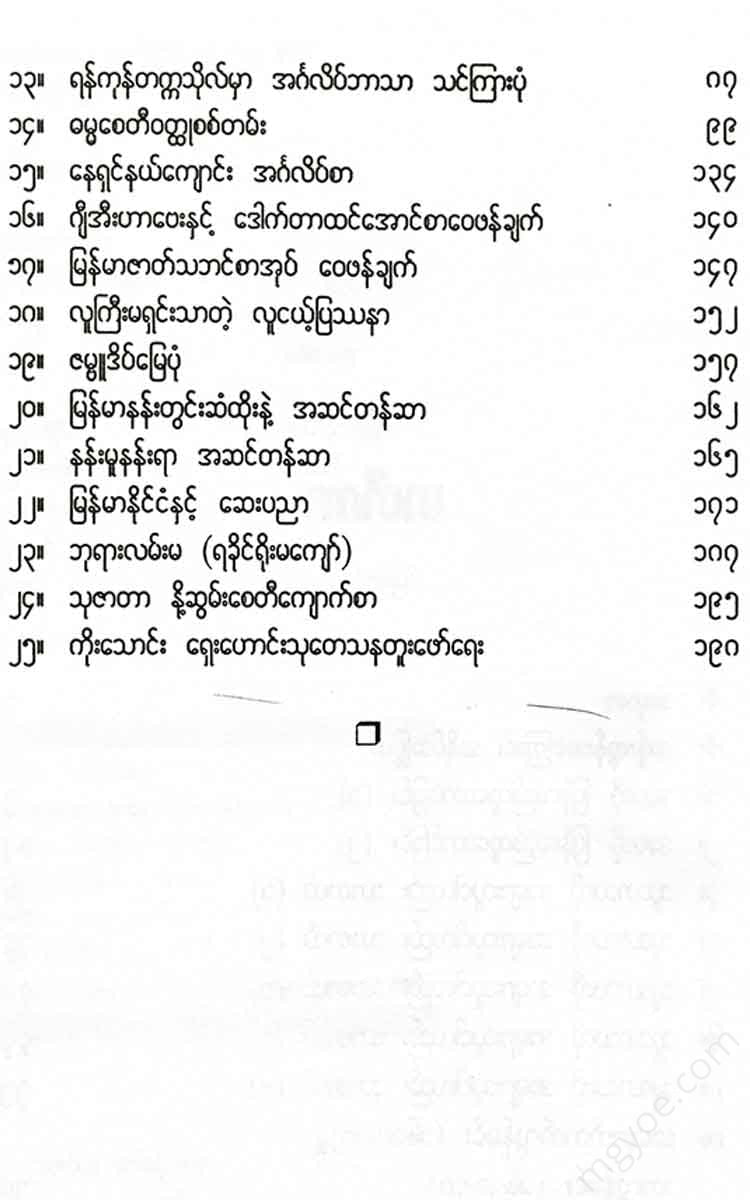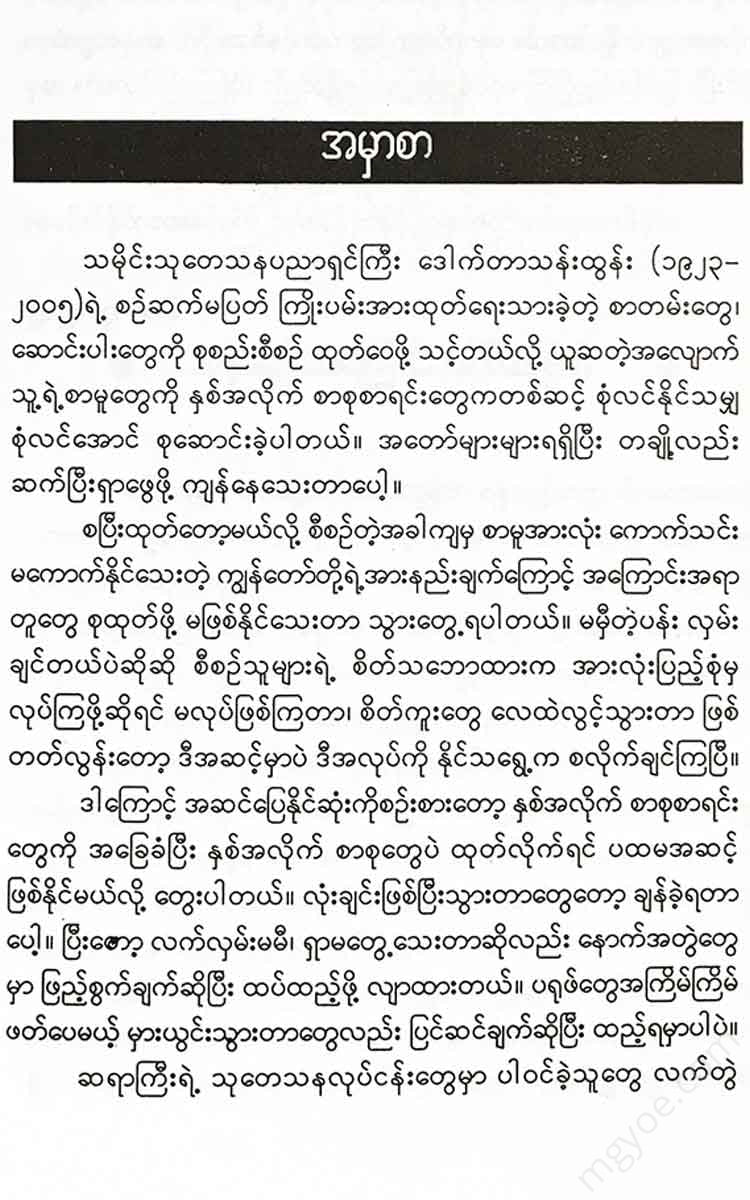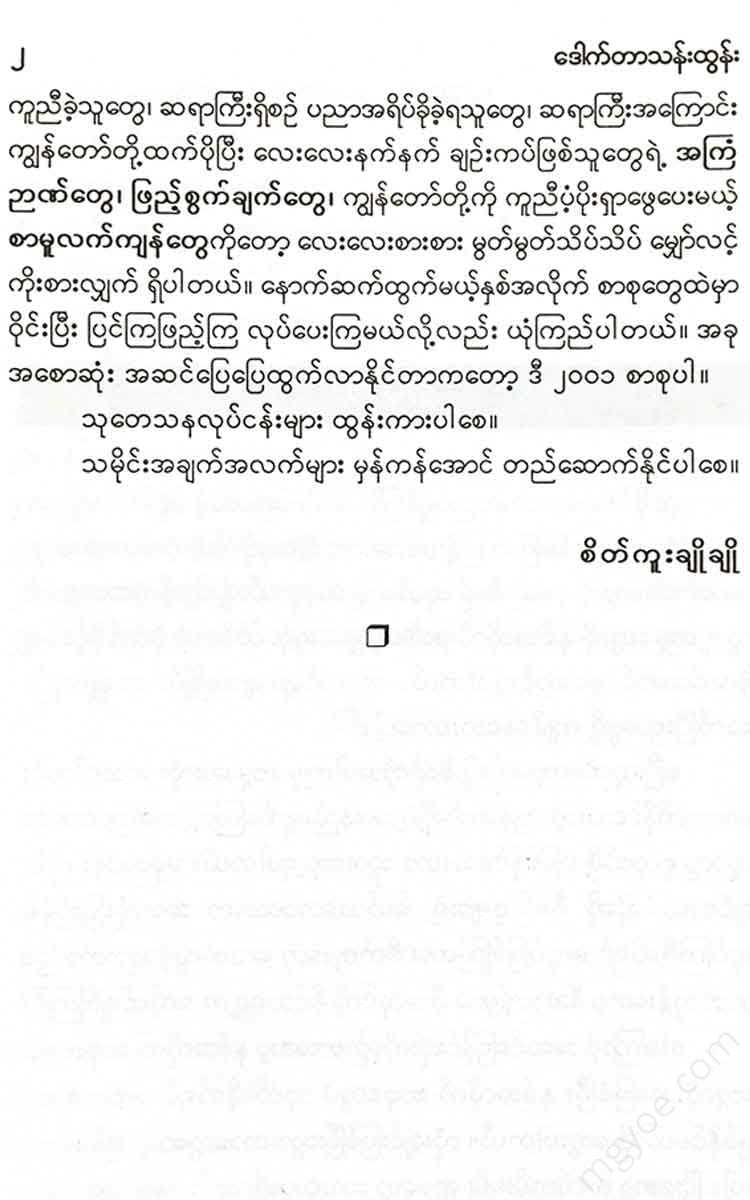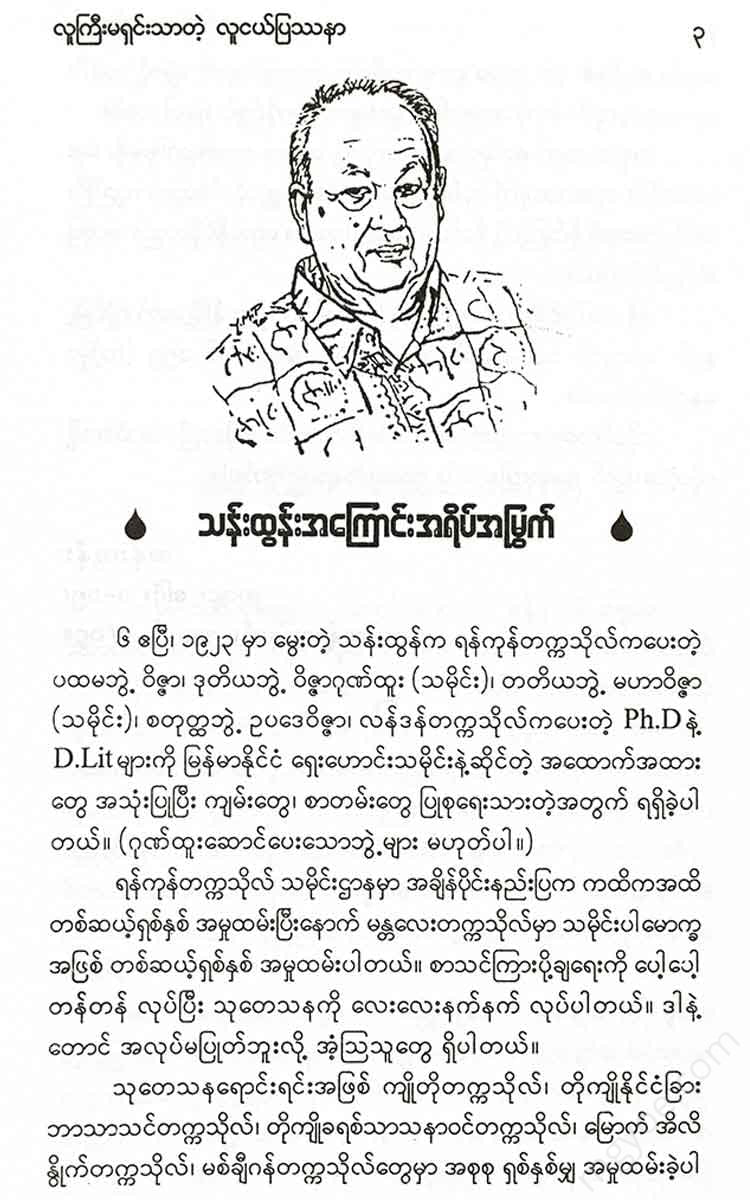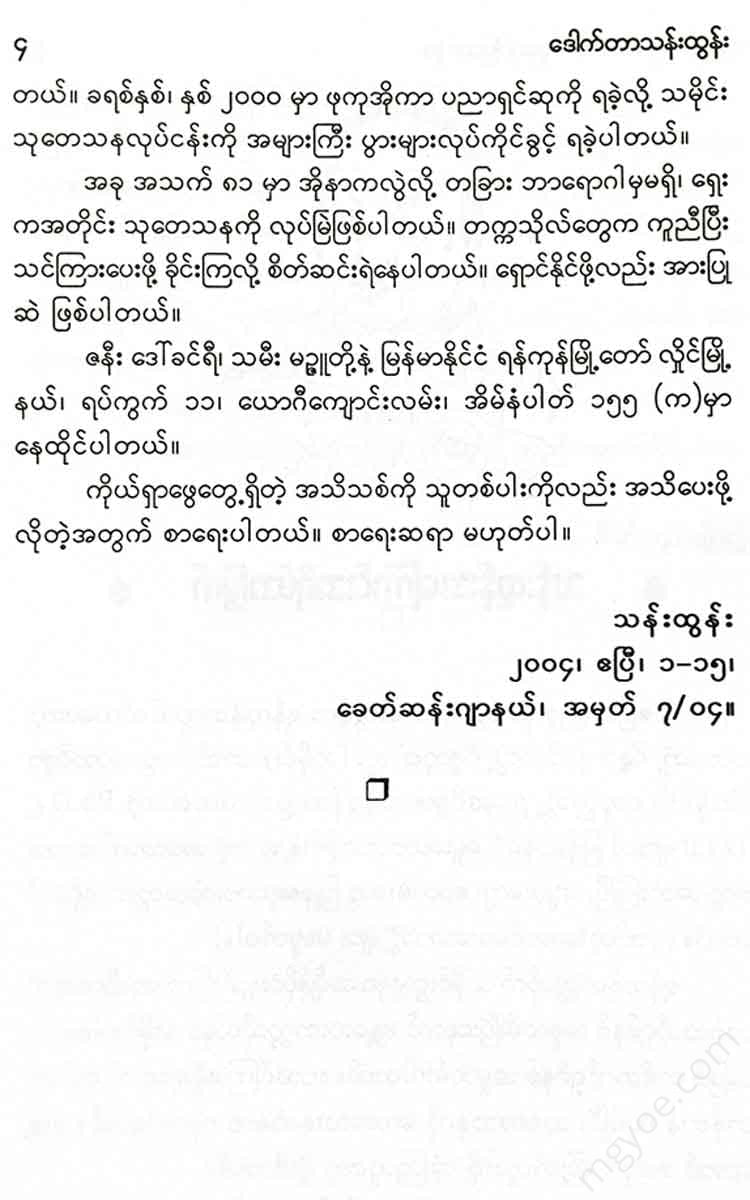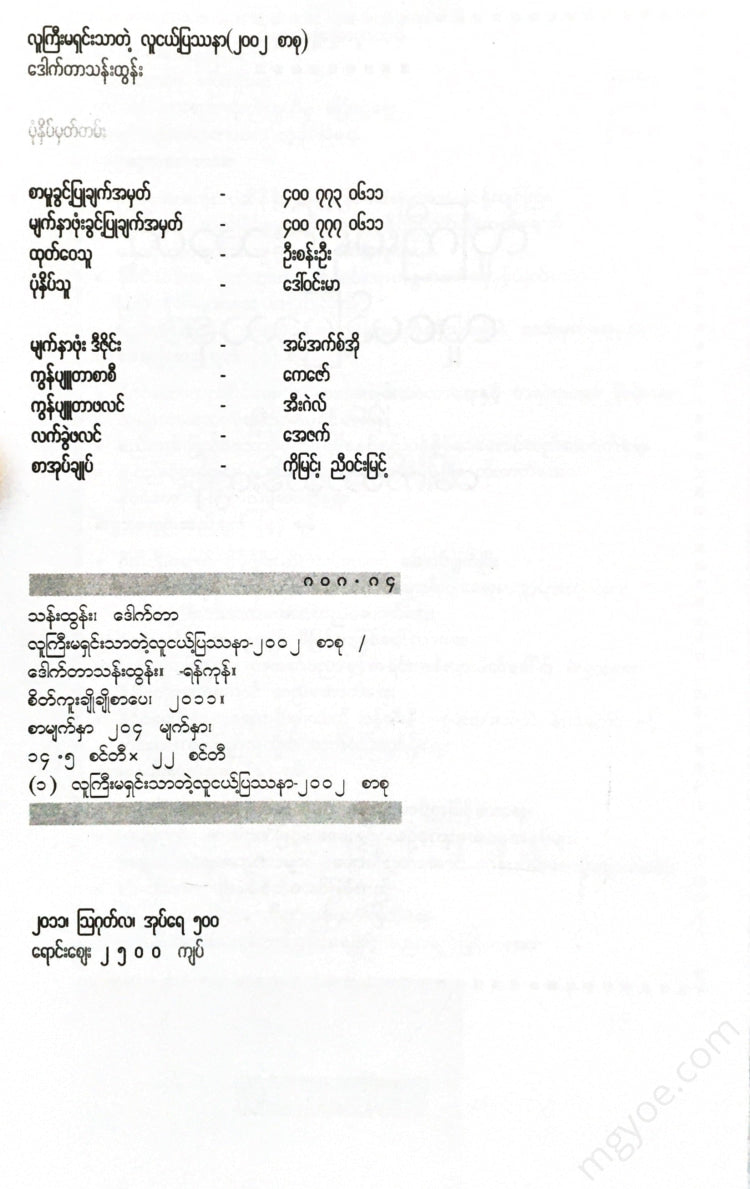စိတ်ကူးချိုချိုစာပေ
Dr. Than Tun - Youth problems that adults cannot solve
Dr. Than Tun - Youth problems that adults cannot solve
Couldn't load pickup availability
Total rehabilitation (1)
King Hanthawaddy Sinphyu Shin (15 January 1516 - 10 October 1518) had three wives, three sons, thirty-four concubines, thirty-five sons, fifty-six daughters, a total of ninety-one (83 wives, a total of 335). When he married the daughter of the feudal lord (Shan Sawbwa), the eldest son of U Phut 1, was the ruler of Nyaungyan. When the eldest son died, his younger son, Thitthaka, succeeded him and became the ruler of Nyaungyan. That prince was called Maung Thitthaka. Later, he became the Nyaungyan King who reestablished Ava as the capital of the kingdom.
There is a story that explains why a prince is called a brother-in-law. It is also found in the five hundred and fifty Jatakas that kings often take away young women from wherever they go. (Kathavahana Jataka No. 7). In the history of Myanmar, it is often said that the remaining soldiers and the White Elephant of Hanthawaddy (Bayint Naung) are accompanied by such young men and women. It is also seen that the Burmese tradition of eating well, eating well, eating well, eating well, eating well, forgetting the traditional Burmese custom of eating well,
The father of King Nyaung-ran, King Sin-phyu-shin, wanted to clear the whole of Shan State. He saw a young girl in Nyaung-ran, and when he saw that she was a good match for him, he sold her ring and raised her. If he had a son, he would have brought him a young boy. As he had ordered, the mother gave birth to a boy, and when the day and month were up, he went to Hanthawaddy with the son. He reported the matter to him. When he found out, he was ashamed and hid it. However, when he knew that it was because of his promise, he knew that he had made a promise to the minister, Banyadala. If he had investigated, he would have been able to hide it like a poor man, as a master and a servant. If he had been ordered to have the boy put in water, he would have drowned his nose in water. The king ordered that the king's feet be drowned in a golden basin. The girl was also drowned in the golden basin. Then, thinking that it was like eating a fish, he would take her feet and have her drowned, and he would have her drowned and be punished. He made the young woman the king and named her eldest son, Shin U Put, and the younger son, Maung Thit, after the sign of his loyalty. When Maung Thit came of age, he made him the ruler of Nyaung Ram. When that prince became king, he was known as Nyaung Ram Min Dhamma. After expanding and establishing Ava, he named it Ratanapura and ascended the throne. (Excerpt from the History, Tin, 4, 1976 reprint, 276-7)
Having said this earlier, if we continue the story, the young man who accused the king of being the father of his child was Khin Phong. He had a son (Shin Uput) from his first marriage, and the son he had with the king was called Aung, and Maung Thittar was named after him when he arrived at the Hanthawaddy Palace. Maung Thittar was restored and, having received the Yadanarnapura, he ascended the throne on 27 August 1547. Thatoe Min Ill (1364-7) founded the city on 1 February 1365 (1963-394) at the confluence of the Ayeyarwaddy and Duththawaddy rivers. He built the city as wide as possible by enlarging the Nga Kye In, Kyauk Maw In, In Bu and Unai In. The main purpose of doing this was to protect security. The Shans from the north (as is well known) came south in 1364 and destroyed the two capitals, Pinya and Sagaing. The site chosen for the new capital was much better than the sites of Pinya and Sagaing. During the rainy season, the island was surrounded by water and thus naturally deterred the enemy. (Dar 1, 1963, p. 396). This place is also called “Akhwason” (Dar 1, 1963, p. 364). Previously known as “Tampadipa”, it was called Inwa since the reign of King Thihathu (1309-25) who ascended the throne on October 20, 1309 (Than Tun 1959, 122). (1963, 398). In 1598, King Nyaungyan (1598-1606) called it Shwewa (order dated August 30, 1598). In 1365, when the palace was built, the city was named Yadanarpura Shwewa. (1963, 396). The king who founded the city cannot be said to have been very powerful. After three years of fighting and conquering the sea regions, the Ava Kingdom became nineteen cities. The nineteen cities and regions were Saku, Sagaing, Nyaungyan, Tagaung, Tapayin, Taluk, Taung Ngu, Taung Dwin Gyi, Taung Pyone Gyi, Pakhan Gyi, Bagan, Pauk Myaing, Pyay, Makhra, Myaydu, Yamethin, five districts of the Yaewai River (Yaptein, Pappaing, Mya Kaung, Taungnyo and Tamyin San) and Watie Warin Tok.
The third successor, the King of Burma (Khin Kyi Saw Ke 13671400), ascended the throne on 3 September 1375 (Than Tun 1959, 128). According to a record (List 682), in the Myanmar region, which was completely destroyed by the Shans (after the construction of the Shwe Kyaung Gya), a ceremony was held on 7 February 1375 (after the Shwe Kyaung Gya was completed). (The Shwe Kyaung Gya Dayaka) The religious freedom was restored due to the generosity of the hands and heart of the great sage, the monks, Brahmins, and laymen, both men and women, who were able to practice the virtues of charity, and the country of the Burmese kingdom, Avalay, grew and prospered, and the country became prosperous and prosperous for a thousand years.
Towards the end of the 14th century, the Ava king began to focus on agriculture to restore peace to the people. The forest monks and forest monks led the development work in the post-war years. The “Tane Sangha” led the work of establishing farms to cultivate the wild land and forests. As a result, many areas saw an increase in the production of crops. (Than Tun 1959a).
At the end of the 14th century, the Ava kingdom was described as follows in the Yanyan Stone (page 7-9, year 762, AD 1400). (Tin Hla Thaw 1959)
King Anawrahta Min Khaung 1400-22 declared that on 25 November 1400, Burma, which he ruled, extended beyond the borders of Tanu and Paunglaung, and beyond the borders of the Kati, Mon and Kyaing tribes, and beyond the Nagas who sacrificed and killed people, to the month of Timmasala (the month of Dimasakasari in the upper Assam), and beyond the month of Tikonya. (The description of the territory is not very clear in this extract. See the list from 1400 AD. (Gar 1, 1963, 452)
Kanni, Kyaukpandaung, Khuntaung, Saku, Sakai, Sale, Sanlin, Sintku, Siputra, Sithar, Nga Sintku, Yenan, Nyaungran, Tagaung, Tapayin, Talok, Taungoo, Taungdwin, Htee Lin, Natmauk, Padon, Patnagor, Pokhangyi, Pokhannge, Bagan, Sea, Pintale, Pyi, Pyinsi, Bantkyi Setai, Makhra, Mindat, Mindon, Myaung, Myatte, Myadoo, Myinsai, Yaw, Yintaw, Yamethin, Yenangyaung, Shatha, Lekai, Laungshe, Hlaingtat, Wati, Tharet, Thagara, Thayarwaddy, Height.
The Ava and Hanthawaddy wars began in 1386 and lasted until 1422. In between, there was a brief pause in 1405, when the two enemy kings met at Pyay San Taw Shin Pagoda, and the border between the two countries was defined as follows.
To divide the upper Myanmar region from the lower (Mon) region, a boundary marker (aligned east-west) should be erected at Sapaka in the east and Tapintarang in the west (Tin Hla Thaw 1959, 146).
Both these places are located in the western part of the country (Tabintraung) and in the eastern part of the country (Sapaka). When the Burmese and Mon fought, both sides suffered great losses of farmland. In addition, there was always the danger that the northern Shans would come down to the south and attack. King Narapati (1501-1527), who reigned from 12 April 1501, was the first king of Ava.
1365-1528 was the last of the powerful and important kings of Ava. He was killed in battle on 9 March 1527. (Mant 2, 1967, p. 136). While he was still ruling the Ava throne, Taungoo became a political power from about 1524 (Mant 2, 1967, p. 134). The first king of the Ava dynasty, Mahathiri Zeya, died in 1530 (Mant 2, 1963, p. 139), and his son Tabin Shwe Htee (1930-51) moved the throne from Taungoo to Hanthawaddy in 1538 (Mant 2, 1963, p. 141), and from that time onwards, Hanthawaddy became a politically important place, even more so than Ava.
According to the Mon inscriptions (Chit Thein 1965, Than Htun 1969), the following table shows the broad picture of Hanthawaddy's role in Myanmar's politics.
11 January 1551, the White Elephant of Hanthawadi (Sri Pavaram Mahadharajadhira)
H. Taungoo Harvest
30 August 1551, the White Elephant was defeated.
12 March 1552, King Sinphyu Shin captured Hanthawaddy.
12 January 1554, the White Elephant was anointed
22 January 1554 The White Elephant left Hanthawaddy.
(To capture the northern part of Shan)
8 January 1557 The White Elephant marched north.
10 January 1557 King Sinphyu Shin seized the lands of Moe Meik, Thipaw, and Patta Myar.
20 February 1557 The White Elephant arrived at Htee Chaing.
6 March 1557, the White Elephant, Moehnyin Thein
26 March 1557, King Moe Kaung Thein of the White Elephant
2 April 1577 The White Elephant ordered that if the Emperor died, he would kill a man.
The king ordered that the sacrifices should not be continued.
9 April 1577, Moe Kaung, the White Elephant, returned to Hanthawaddy.
When Hanthawadi Sinphyu Shin died on 17 November 1581, his son, Dayaka (1581-1600), succeeded him. During his reign, there was no end to war. There were constant attacks. His father's kingdom was too vast to be controlled. He tried to recapture the territories that had escaped from his control, but in the end he found himself unable to control them. Only 29 territories remained under his control. (List 1048a)
Kalay, Katha, Kanpauk, Khamti, Khemawara, Gowlon, Sandar, Saint, Zinron, Nyaungshwe, Tamalitti, Tampadipa, Pakkyaw, Bhamo, Mahanawara, Mai Khun, Mai Sin, Mai Ti, Mai Pei, Moe Kaung, Moe Nyin, Moe Na, Moe Nel, Moe Mat, Moe Wan, Thipaw, Suna Paranta, Seinwi, Ayudhya.
This list is said to have been made before the fall of Hanthawaddy. Soon after the list was made, Ava was destroyed. The person who would re-establish Ava was King Nyaung Ram. Nyaung Ram, which he controlled, was prepared from 1596 to withstand the attacks of all enemies.
